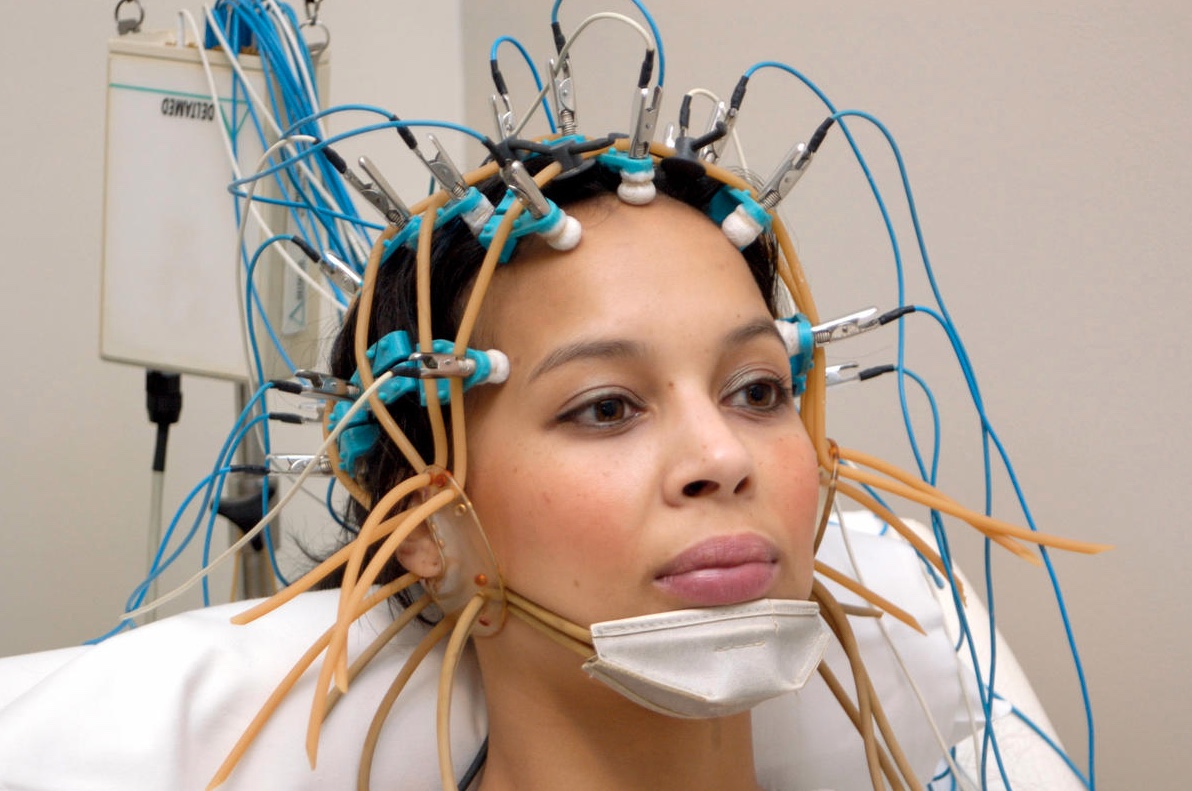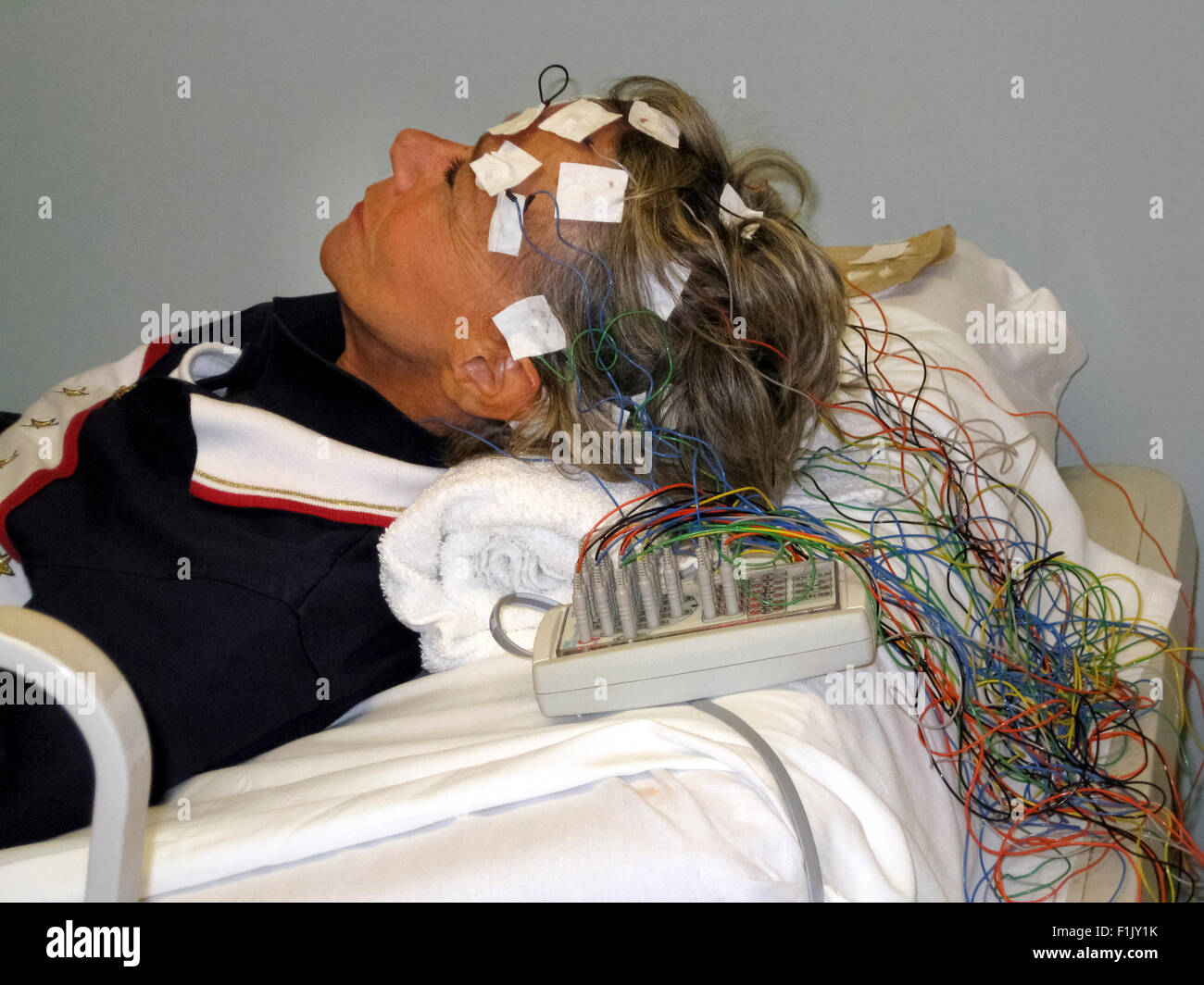

The recordings will need to be analysed first and will be sent to the doctor who requested the test. You normally will not get your results on the same day. You might feel tired after the test, particularly if you had a sleep or sleep-deprived EEG, so you may want someone to pick you up from hospital. You can usually go home soon after the test is finished and return to your normal activities. Your hair will probably still be a bit sticky and messy afterwards, so you may want to wash it when you get home. When the test is finished, the electrodes will be removed and your scalp will be cleaned. The video is also recorded by the computer and kept under regular surveillance by trained staff. The EEG signals are transmitted wirelessly to a computer. The test is usually carried out over a few days while staying in a purpose-built hospital suite. This can help provide more information about your brain activity. Video telemetry, also called video EEG, is a special type of EEG where you're filmed while an EEG recording is taken. You can continue with most of your normal daily activities while the recording is being taken, although you'll need to avoid getting the equipment wet.

#Eeg test portable#
The electrodes will be attached to a small portable EEG recorder that can be clipped onto your clothing. Ambulatory EEGĪn ambulatory EEG is where brain activity is recorded throughout the day and night over a period of one or more days. In some cases, you may be asked to stay awake the night before the test to help ensure you can sleep while it's carried out. It may be used if a routine EEG does not give enough information, or to test for sleep disorders. Sleep EEG or sleep-deprived EEGĪ sleep EEG is carried out while you're asleep. In most cases, you'll also be asked to breathe in and out deeply (called hyperventilation) for a few minutes.Īt the end of the procedure, a flashing light may be placed nearby to see if this affects your brain activity. Types of EEG Routine EEGĪ routine EEG recording lasts for about 20 to 40 minutes.ĭuring the test, you'll be asked to rest quietly and open or close your eyes from time to time. Other types of EEG recording may take longer. Routine EEG recordings usually take 20 to 40 minutes, although a typical appointment will last about an hour, including some preparation time at the beginning and some time at the end. These are connected by wires to an EEG recording machine. You'll also be asked whether you give permission (consent) for the various parts of the test to be carried out.īefore the test starts, your scalp will be cleaned and about 20 small sensors called electrodes will be attached using a special glue or paste. The clinical neurophysiologist will explain the procedure to you and can answer any questions you have. There are several different ways an EEG recording can be taken. Some people bring a hat to cover their hair until they can wash it at home afterwards. You might want to bring a hairbrush or comb with you, as your hair may be a bit messy when the test is finished. To help the sensors stick to your scalp more easily, you should make sure your hair is clean and dry before arriving for your appointment, and avoid using products such as hair gel and wax. Unless told otherwise, you can usually eat and drink beforehand and continue to take all your normal medication. Your appointment letter will mention anything you need to do to prepare for the test. Less often, an EEG may be used to investigate other problems, such as dementia, head injuries, brain tumours, encephalitis (brain inflammation) and sleep disorders, such as obstructive sleep apnoea. An EEG will help your doctor identify the type of epilepsy you have, what may be triggering your seizures and how best to treat you. The main use of an EEG is to detect and investigate epilepsy, a condition that causes repeated seizures.

It may help identify the cause of certain symptoms – such as seizures (fits) or memory problems – or find out more about a condition you've already been diagnosed with. When an EEG is usedĪn EEG can be used to help diagnose and monitor a number of conditions affecting the brain. The EEG procedure is usually carried out by a highly trained specialist, called a clinical neurophysiologist, during a short visit to hospital. These signals are recorded by a machine and are looked at by a doctor later to see if they're unusual. An electroencephalogram (EEG) is a recording of brain activity.ĭuring the test, small sensors are attached to the scalp to pick up the electrical signals produced when brain cells send messages to each other.


 0 kommentar(er)
0 kommentar(er)
